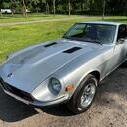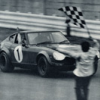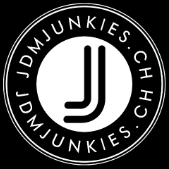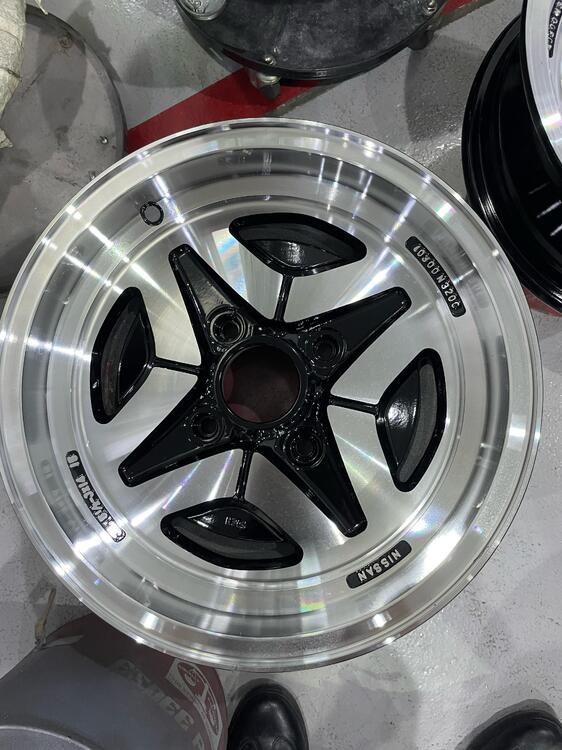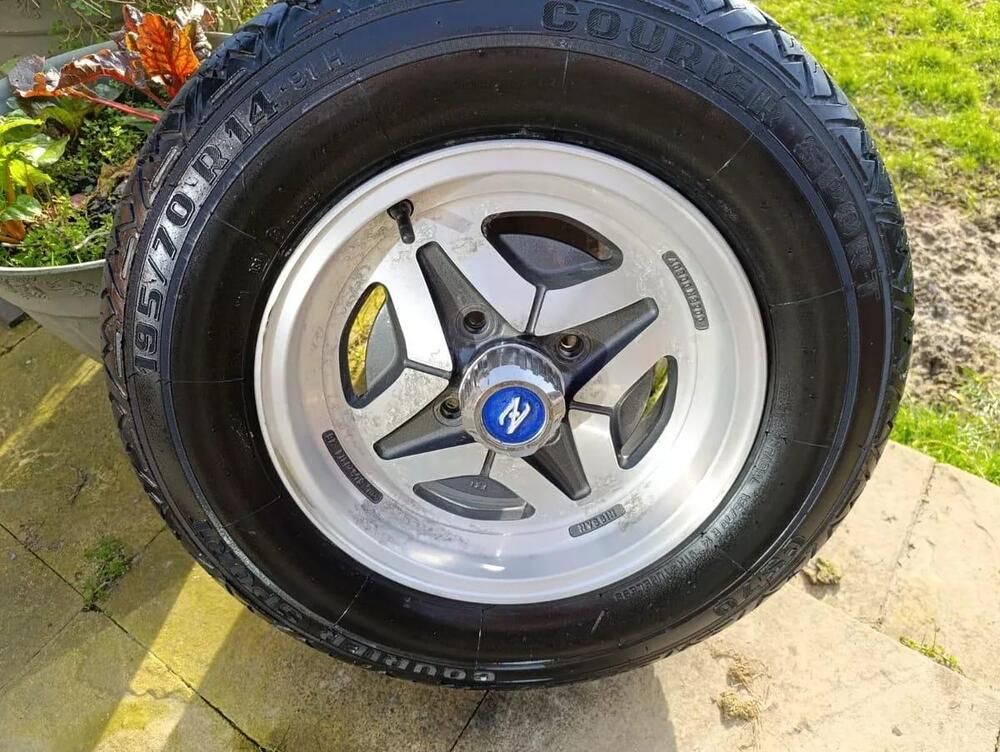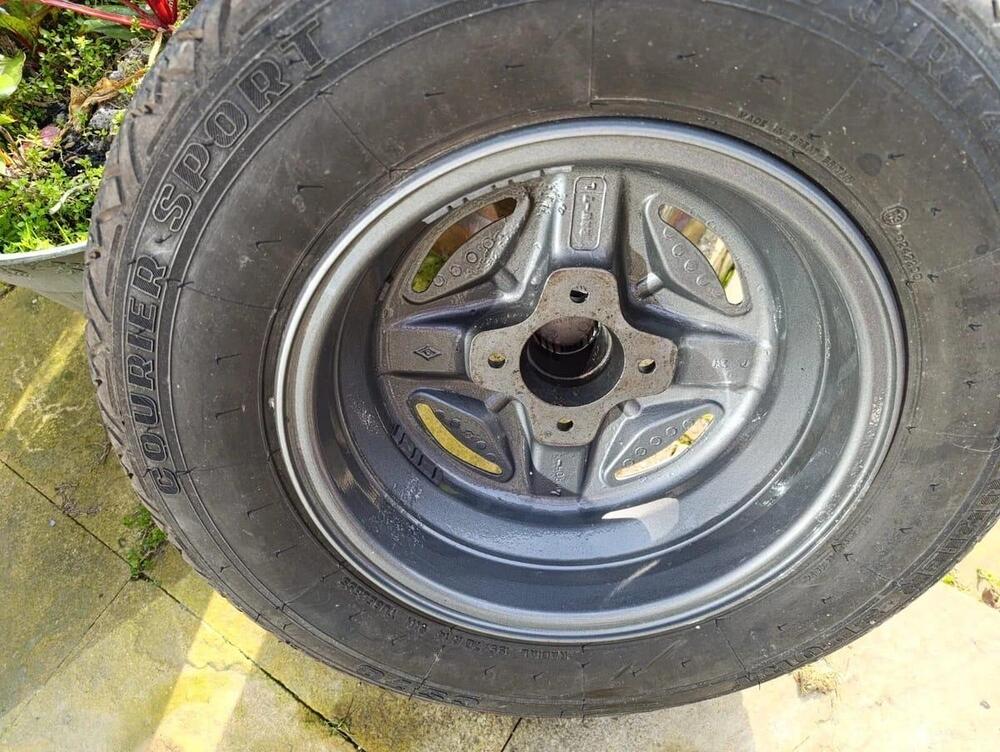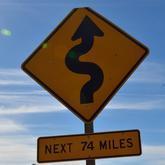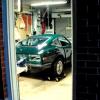All Activity
- Past hour
-
Mitchel0407 started following Tire size. Confirm once and for all...
- Tire size. Confirm once and for all...
- Today
-
prostore@ix.netcom.com started following Tire size. Confirm once and for all...
- Tire size. Confirm once and for all...
-
dutchzcarguy started following Tire size. Confirm once and for all...
-
Tire size. Confirm once and for all...
I know these datsun 260z rims quite well and i would never go over 195/70R14 tires on these!! The 280zx has 6 inch wide rims and 195/70R14 tires on! The standard on 5,5 Inch rims is 185 and max 195 i would advice you! Best drive would be i think the todays 185/60R14 but then it leaves a bit of open wheelhousing.. I would prefer a good ride above a good LOOK! ;-)
-
Z Restoration Progam
@Zed Head Have you tried searching using the Japanese language? No, you're putting the cart before the horse there. How about 'Without a document explicitly stating that Cadmium-plated parts were used on these cars when they were made, the assertion remains anecdotal.' Aside from the issue of legislation, have you considered the elephant in the room here? Where does the assertion that the electroplating and protective, sacrificial chromate/passivate coatings we are discussing here were CADMIUM actually come from in the first instance? Where's the source? I've seen 'Cad' being referred to on this forum - and elsewhere - for many years as though it is established fact. Mostly from USA-based individuals. Where did that start, where did that come from? Can anyone provide any official data, document or communication from Nissan which talks about Cadmium electroplating being used on these cars in period? I'd be delighted to see it if such a thing can be found. Meanwhile, we have official, period documentation from the manufacturer - specifically relating to the S30-series Z - published Pro Bono for our use in maintaining the cars, which states that fasteners and fixings were electroplated with ZINC coatings. No mention of Cadmium. I posted an example of this, and you have - so far @Zed Head - all but ignored it. Any specific reason for that?
-
Round top SU carb piston binding
If you do one at the time you have a (mirrored) example there to see how it sits/comes together again.. and... ALWAYS make pictures BEFORE taking apart.. it's so easy to miss that sequence of the little rings/parts on there! RULE NUMBER ONE: MAKE PICTURES OF EVERYTHING YOUR GONNA RESTORE!
-
The Development Story & Specification Of The European Spec Datsun 240Z
The first versions were (as far as i know) never sold officially, but only delivered for testing as prototypes. Some ended up in private ownership. but i guess those were very few. The upgraded suspension, front and rear spoilers, 5-speed transmission and the different front turn signals, etc were standard equipment on all european cars. Even though the parts catalogue lists things as optional, as far as i know, most (all?) european Datsun importers didn't sell any dealership options and most cars were sold as standard european final spec cars. Aside from Portugal, of course, which had their own specifications.
- Tire size. Confirm once and for all...
-
w3wilkes started following Tire size. Confirm once and for all...
- Tire size. Confirm once and for all...
-
pjczc8 started following Tire size. Confirm once and for all...
-
Tire size. Confirm once and for all...
Hi All, Normally I can answer any question I have using all available sources on the internet but with this question I want to confirm with this community before pressing the buy button. I have a stock standard 1977 280z. I have purchased and reconditioned a set of 14x5.5 Nissan alloys (see pictures). I live in Qatar so tire choices are extremely limited. I can get some basic Yokohama ES32 in 195/70R14 if I want a stock black wall look. However I am tempted to import some BF Goodrich Radial TA's in either 225/60R14 or 205/70R14 at 4 x times the cost - because I love the look. My question is that with 5.5 inch wide alloys can I definitely get away with the 225/60s (which have a similar circumference to stock) or do I have to go with the 205/70s (which have a taller/larger circumference)? I have read a lot of people saying that 225s are OK, however I worry that they have 6 inch wheels not 5.5. At 4 x the price of the tires I can get locally I really don't want to get it wrong. Thank you for your help (and please feel free to share pictures in your response).
-
Z's on BAT and other places collection
Doesnt look too bad at all. Im guessing by the posters name that it is going to be listed on Hagerty Marketplace; yet to be listed at time of my posting.
-
240z Door Hinge Rebuild
I think it can be unbolted with the fenders on. just enough room with a swivel, a bent wrench, some friends and a 6 pack. lol The backing plates can be retrieved if they fall, use a stick magnet, you might have to remove the ECU, Holding them in place while starting the bolts is another circus act. get some friends back over and a 12 pack. haha!!
-
Bodywork Issues
Hmmm. Not sure if this will help, but: OEM weatherstrip often makes strategic use of 'rubber stuffing' (technical term -- I just made it up) at locations where the strip has to make a tight bend. It's put there to keep the hollow section from collapsing (which would possibly lead to unwanted wind noise or water ingress). You can't see it. You'll only know it's there by doing a pinch comparison at selected locations along the length of your the weatherstrip. I found it in both the Kia Sportage and Nissan Altima weatherstrip that I experimented with. The 'stuffing', as used, was ~ 4" - 5" long. I wonder if the aftermarket suppliers are doing the same thing? p.s. I used the front-door weatherstripping from a late-1990's Kia Sportage for both my doors and hatch. Very happy with the results.
- Yesterday
-
Z Restoration Progam
I've spent some time (too much, it feels like) searching for evidence of when cadmium was banned in Japan and most of what I'm finding suggests that it wasn't banned until after at soonest early 1971. Lawsuits were happening but no statements about an outright ban of any form have been found. Here's one example. Article published March 1971. Cadmium still in use in more than 1,000 plants. "Prime Minister Sato has ordered health checks on all workers in the more than 1,000 Japanese plants that use cadmium—a crucial step, since only a handful of those plants take adequate safety precautions. Last week health officials reported that cadmium has tainted much of the country’s rice." https://time.com/archive/6838618/environment-and-now-cadmium/ Environment: And Now, Cadmium 3 minute read TIME March 8, 1971 12:00 AM EST
-
Bodywork Issues
They corrected that mistake with the 260's on - by putting struts on both sides. Not only does a single strut cause the hatch to twist but when closed there's always pressure on one side and not the other. The gas strut is constantly exerting pressure forward on the left hinge and not on the right hinge. You probably won't like the cure as it involves finding a parts Z - 260 or 280 - and removing the mount from the right side strut that's welded on there and moving it to your car so you can add a right side hatch strut. And I don't remember if the early Z hatches have captive nuts for strut mount on both sides or not. We had a guy in Scottsdale rebuilding a 240Z that wanted to add that second strut before he painted so we cut that bracket off a parts car for him. I've never tried to replace the hatch hinge pins (which might get worn). We learned early on to leave the hinges in place whenever possible as they're such a PITA to properly adjust once you've loosened or removed them.
-
Z Restoration Progam
That's what this whole back-and-forth has been about. He has - for many years - repeated the claim that the original plating on the cars [from the factory] was 'Cad'. I say the period Nissan documents specifically tell us that it was Zinc. Why would they do that if it was in reality Cadmium? You seem to be far more ready to accept Carl's anecdote as proof than you are of an official technical description - published by Nissan Japan themselves, in their native language, as part of the component part numbering and identification for the S30-series Z cars, from 1969 onwards - which tells us differently. I have posted an example - with a literal translation - and yet you discount it due to "interpretation"? Same thing happened with the so-called 'Build Sheet' up-thread. Written clear as day, but inexplicably ignored.
-
Z Restoration Progam
I'm seeking the truth. If it ruffles feathers like yours, then so be it. This forum has for much of its existence been a productive host for those of us who seek the truth about the S30-series Z cars, the circumstances that produced them and the people behind them. That has involved a few myths being busted, the occasional sacred cow being put out to pasture and people - including me - learning truths that were hitherto unknown. We didn't get there by accepting the status quo and we should not be happy to live in an echo chamber. As I said before up-thread, many of the facts and data that YOU - a relative newcomer to this scene - take for granted were uncovered and/or revealed right here. Your 'RAE' jibe is not the barb you think it is. We are all Armchair Experts here. For me, proudly so. Perhaps you see yourself as an exception?
-
The Waive
Gents, if you see this again, please use the "report" feature. It was broken previously but I fixed it today.
-
Bodywork Issues
I ordered and received one of these seals from Scott's as well. I can confirm that it's much better than the Precision version. With the Precision version there was a big gap all the way along the bottom of the hatch, which welcomed copious quantities of exhaust into the cabin. The hatch sat visibly higher than the edges of the quarter panels. The hatch was higher on the driver's side, and stuck out slightly at the back on that side. I removed all the weatherstripping (both inner and outer) and checked the fit. I was surprised to find that the hatch still sat slightly high and stuck out slightly at the back on the driver's side. I removed the support strut and that allowed everything to align. The strut is a replacement. I'll have to check the source. With the new hatch seal in place, but not glued, the hatch sits pretty nicely. It's very slightly high, but I suspect it will settle, and I haven't tried adjusting the hinges or latch yet. Once I connect the strut, though, it's noticeably higher again. It's lower than it was with the Precision seal and there's no gap along the bottom edge, so I don't think exhaust will be a problem, but it's higher than I'd like it. Has anyone noticed a strut causing the hatch to misalign? Any ideas about how to correct it? I'm a little surprised that the strut can move the hatch backwards. I would have thought the hinges would prevent that.
-
4/75 Datsun 280Z; Leaf Green, CA market, 250K miles, Long Term Project 03/2023-
@MH77280Z has done this on a 280 if I remember correctly. May be of some help to you. After seeing what you did to your older garage, I'm a little claustrophobic and it made me cringe, I am so happy for you and your new space. 🙂
-
Mike started following Events Calendar Now Online!
- Events Calendar Now Online!
-
Wheel and tire sets 240z, 280zx, 3oozx
IRON CROSS WHEELS SOLD.
-
240z Engine, 280zx Engine, 280zxt Engine
280ZX TURBO engine SOLD.
-
Z Restoration Progam
Carl's comment really doesn't have anything to do with the Restoration program. It's just an interesting aside that suggests that Nissan used Cadmium-plated fasteners on the early cars. His comment stands alone and could be a completely separate thread. So far, all of the comments refuting what Carl has described are based on supposition and interpretation of various documents. "Cadmium was banned", "why would Nissan do that", etc. Those statements are interesting but only describe what Nissan intended or what people think Nissan intended. Having worked for large corporations it's easy for me to imagine years worth of cadmium-plated inventory being used up before the switch to new process inventory. Without a document explicitly stating that cadmium-plated parts were banned from use, immediately, or with a set date, the question remains open. Maybe it's in the Japanese langauge documents.
-
Z Restoration Progam
Cad plating has much better corrosion resistance than zinc, hence it's use. The Vintage Z program was never about originality but restoring selected 240Z to as new condition with a warranty using parts and processes available in California in 1996-98.
-
JDMjunkies.ch started following Z Restoration Progam
-
Z Restoration Progam
I'm on HS30-H side here when it comes to Factory Nissan JAPAN Plating. The official Nissan documentation clearly shows Zinc plating plus Cadmium plating was banned in Japan by that time, so why would anyone believe it was anything else than Zinc plating (or yellow / blue passivating, as it's called here) On the other hand, the Z-restoration program was executed by selected workshops with support from NMC USA! According to the Z-head document in the previous post, it appears that those were indeed replated with Cadmium in the USA by some private shops. At least according to that checklist. Which is kind of interesting that the restored cars are different from the factory cars. Which is also a bit strange. Because there is a bit of difference in appearance between cad and zinc, so why would they choose something different - especially much more poisonous?? Maybe missing knowledge? Or was it cost saving?




